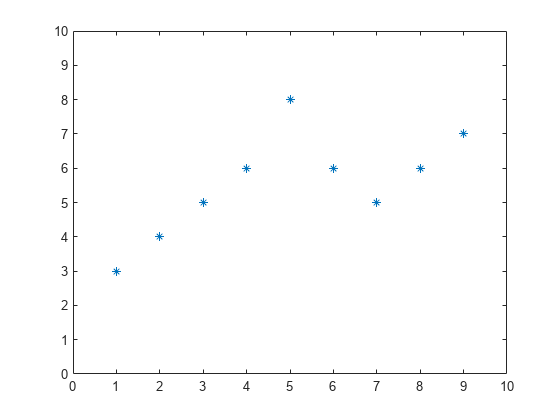

You can even do arithmetic using end: v(2:end-1) % Extract the second through the next-to-last elementsĬombine the colon operator and end to achieve a variety of effects, such as extracting every k-th element or flipping the entire vector: v(1:2:end) % Extract all the odd elements The end operator can be used in a range: v(5:end) % Extract the fifth through the last elements The special end operator is an easy shorthand way to refer to the last element of v: v(end) % Extract the last element Swap the two halves of v to make a new vector: v2 = v() % Extract and swap the halves of v The colon notation in MATLAB provides an easy way to extract a range of elements from v: v(3:7) % Extract the third through the seventh elements Or the subscript can itself be another vector: v() % Extract the first, fifth, and sixth elements The subscript can be a single value: v(3) % Extract the third element Lapack_lug.html), Third Edition, SIAM, Philadelphia, 1999.Let's start with the simple case of a vector and a single subscript. Inv uses LAPACK routines to compute the matrix inverse: Using A\b instead of inv(A)*b is two to three times as fast and produces residuals on the order of machine accuracy, relative to the magnitude of the data. The direct solution produces residuals on the order of the machine accuracy, even though the system is badly conditioned. But the size of the residuals, obtained by plugging the computed solution back into the original equations, differs by several orders of magnitude. Both produce computed solutions with about the same error, 1.e-6, reflecting the condition number of the matrix. It takes almost two and one half times as long to compute the solution with y = inv(A)*b as with z = A\b. On a 300 MHz, laptop computer the statements Thus the system of linear equations is badly conditioned, but consistent. The exact solution x is a random vector of length 500 and the right-hand side is b = A*x. A random matrix A of order 500 is constructed so that its condition number, cond(A), is 1.e10, and its norm, norm(A), is 1. Here is an example demonstrating the difference between solving a linear system by inverting the matrix with inv(A)*b and solving it directly with A\b. This produces the solution using Gaussian elimination, without forming the inverse. A better way, from both an execution time and numerical accuracy standpoint, is to use the matrix division operator x = A\b.

One way to solve this is with x = inv(A)*b. A frequent misuse of inv arises when solving the system of linear equation s. In practice, it is seldom necessary to form the explicit inverse of a matrix. A warning message is printed if X is badly scaled or nearly singular. Returns the inverse of the square matrix X. Inv (MATLAB Functions) MATLAB Function Reference


 0 kommentar(er)
0 kommentar(er)
